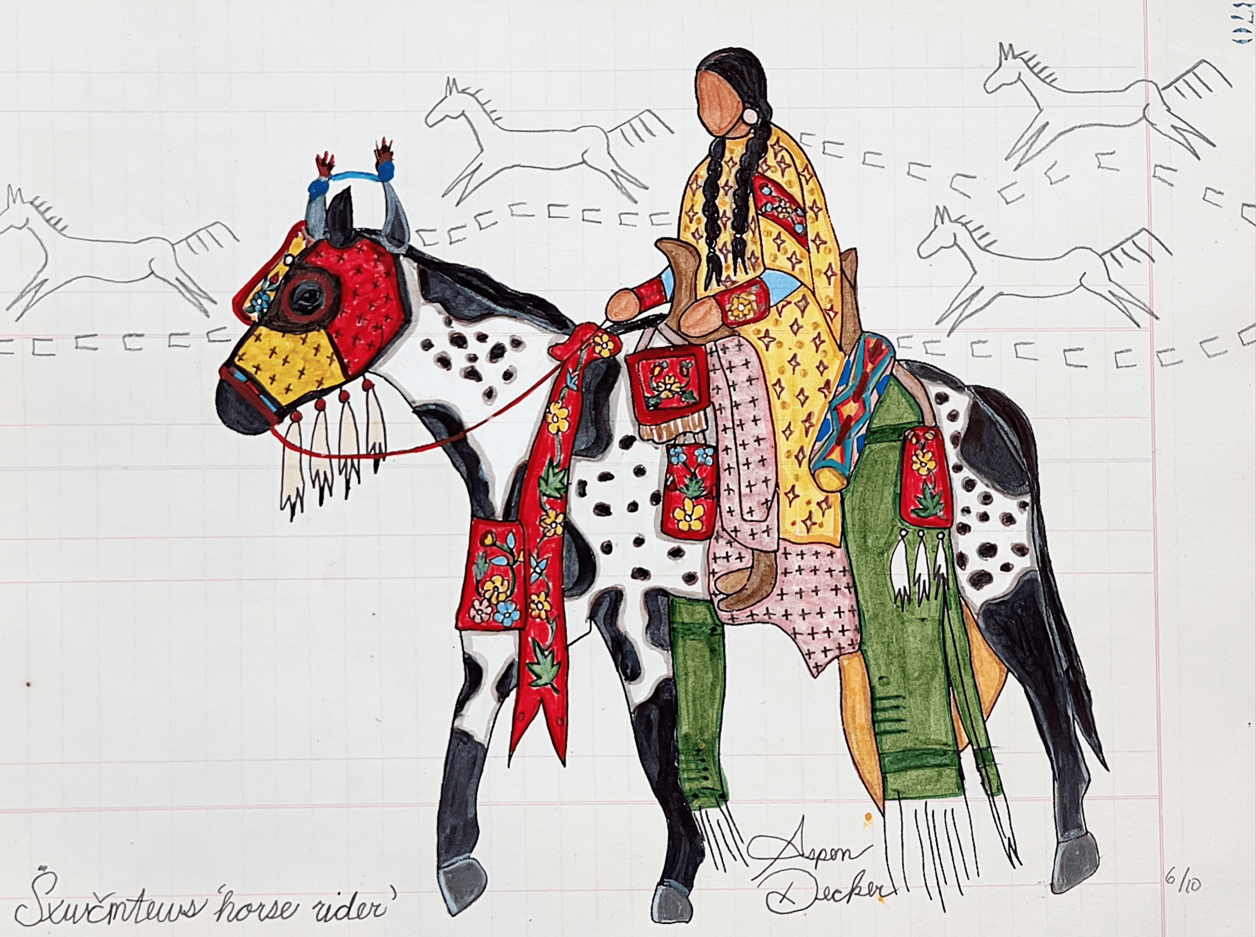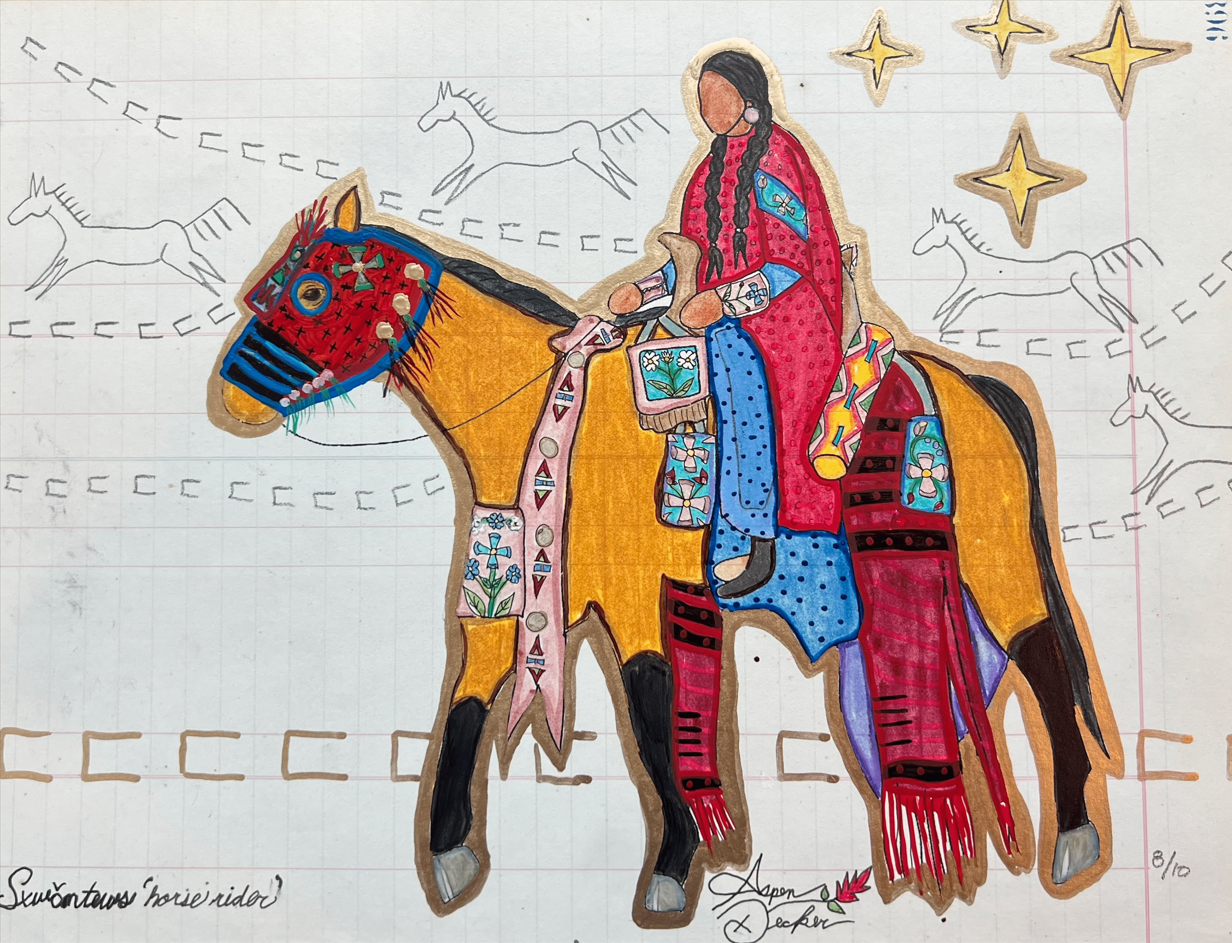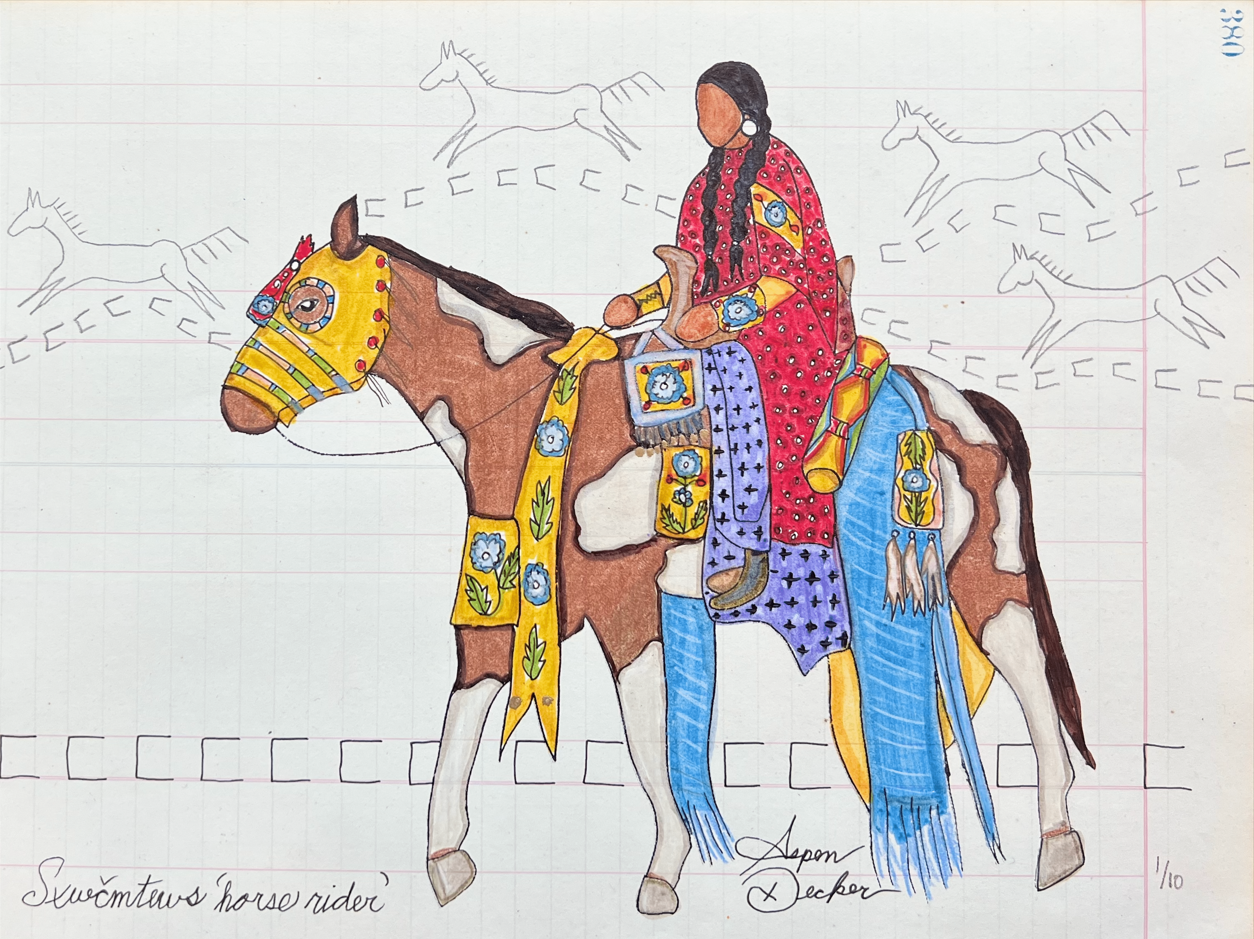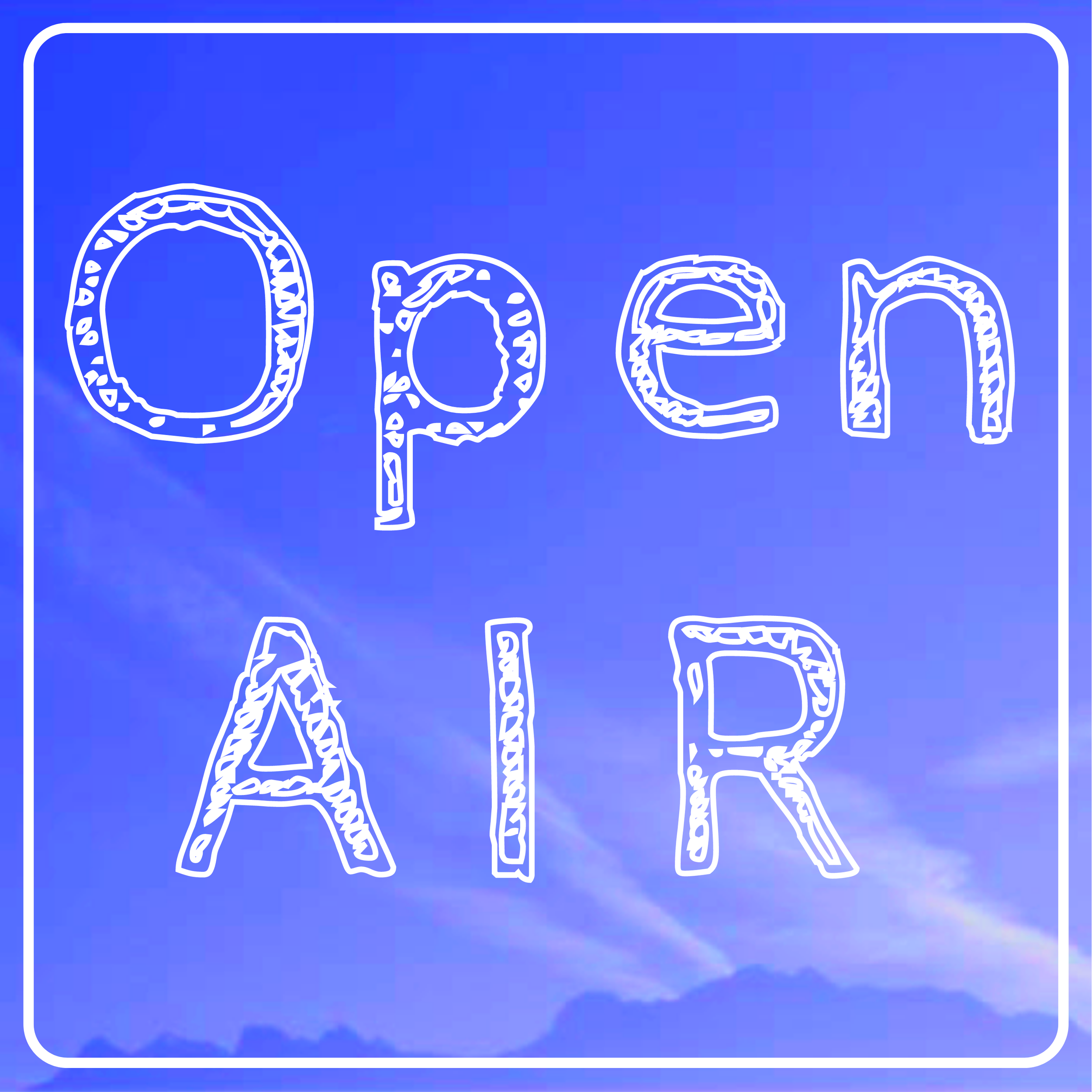Aspen Decker: ROOTED
“I continued creating ledger art that is deeply rooted in the essence of Indigenous voice and narratives. This art form, has become a canvas for me to portray historic events and the tribal uses of the local landscape, uniquely reflecting the perspectives and experiences of my people.”
Spring 2023 Artist-in-Residence at the Missoula Public Library
X̣ʷlč̓musšn ‘Ancestors’ Dream is composed of a mix with 1890s antique music paper, and cowrie shells hand stitched to the traditional Salish style dress that is created on a 1947 Montana tax ledger. The elements of this piece represent the intricate connections between our ancestors and the future they fought for to ensure the continuation of language and culture. This dream shows my daughter, who’s named after her great great great grandfather Chief Charlo aka Plentyhorses. She is a first language Salish speaker, the dream of passing on the ways of our people and our language.
How would you describe your work?
Ancestral Indigenous knowledge and language is at the heart of my work. As a Salish language speaker and cultural artist, my artwork connects to my Sqelixw ways of knowing. I believe doing something good with your hands 'art', will leave good marks on our homelands.
Silent Echoes: Honoring Our Sqelixw ‘Indigenous’ Woman, is an MMW artwork that is brought to life with figures of Indigenous women, depicted on historical 1872 ledger paper, riding horses that symbolize their journey through the times. These figures are interwoven with red tracks that cross the canvas, representing the bloodlines and the spiritual paths of these women, echoing their presence and resilience. The morning stars, on the artwork reflects the people and hope and guidance in finding our Indigenous women.
How was your experience as an Open AIR Artist-in-Residence? - What was your research process during this time?
The laser engraver at the library became a valuable tool that influenced my traditional Indigenous artwork, enabling a cultural adaptation of my designs on cedar bark.
It served as a bridge between the ancient techniques of art and modern innovation, enabling me to blend tradition with contemporary expression and ultimately enriching my artistic journey.
The coyote riding a buffalo and has characters and themes from traditional coyote stories. The coyote, often seen as a trickster or a teacher in various Indigenous mythologies, represents wisdom, survival, and the complexities of life. Its interaction with the buffalo, a symbol of abundance and strength, weaves a narrative that transcends time and speaks to the timeless values and teachings of the Salish and Ksanka people. It represents Time Immemorial of the Salish People, embodying the deep, spiritual connections to land, animals, and stories that define my culture. My art honors our Sqelixw ways of knowing and leaves a lasting mark of knowledge for future generations
What keeps you returning to this subject, body of work?
What keeps me returning to my artistic style and body of work is a combination of personal fulfillment, cultural preservation, and the belief in the positive impact that my art has on my community and homeland. By creating art, I am actively participating in keeping my language and traditions alive, fostering a sense of identity and continuity for future generations. The notion that creating 'art' with one's hands will leave good marks on the homeland suggests a holistic view of art as something that enriches the land, my culture, and community. It's a form of stewardship and an expression of gratitude and respect for the heritage that shaped who I am.
Horse parade series of ten original 1872 ledgers titled: Sxʷčmtèws ‘Horse Rider’
Any new projects in the works?
My recent ledger artwork and new projects in the works embody the theme of ancestral Indigenous knowledge and language that is central to my work as a Salish language speaker and cultural artist. The first piece is a depiction of Missoula from a pre-contact perspective, focusing on a now-lost island in the Clark Fork River that once lay adjacent to Bear Tracks Bridge. This artwork not only serves as a visual documentation of a significant geographical feature that has been altered over time but also represents the enduring connection of the Salish people to our ancestral lands. The transformation of the river and the disappearance of the island echo the broader narrative of change and resilience inherent in Indigenous history. I am in the process of creating more Historical events, such as Salish and Ksanka art about the Bitterroot Salish Removal from the Bitterroot Valley and the signing of the Hellgate Treaty of 1855.
What are you up to now (post Open AIR)?
After completing my artist residency, I continued creating ledger art that is deeply rooted in the essence of Indigenous voice and narratives. This art form, has become a canvas for me to portray historic events and the tribal uses of the local landscape, uniquely reflecting the perspectives and experiences of my people. My work showcases Salish culture, aiming to illuminate the multifaceted existence of our community. Through each piece, I strive to capture the stories, traditions, and spirit of the Séliš and Ksanka people, offering a visual representation of our heritage and resilience. This journey in ledger art is not just an artistic endeavor, but a mission to preserve and celebrate our identity, ensuring that the echoes of our ancestors are heard and felt in the contemporary world.
This ledger art is a depiction of Chief Joseph Ninepipe (Nganta). There are no photographs taken of him, so I used his son Antoine and grandchildren Louie and Andrew Ninepipe as references to his identity through their family designs. His name comes from being a war pipe holder and being a part of nine war parties and horse raids. He was also a known to be a good buffalo hunter.
Check out her Instagram @xwlxwilt and visit her website HERE!










